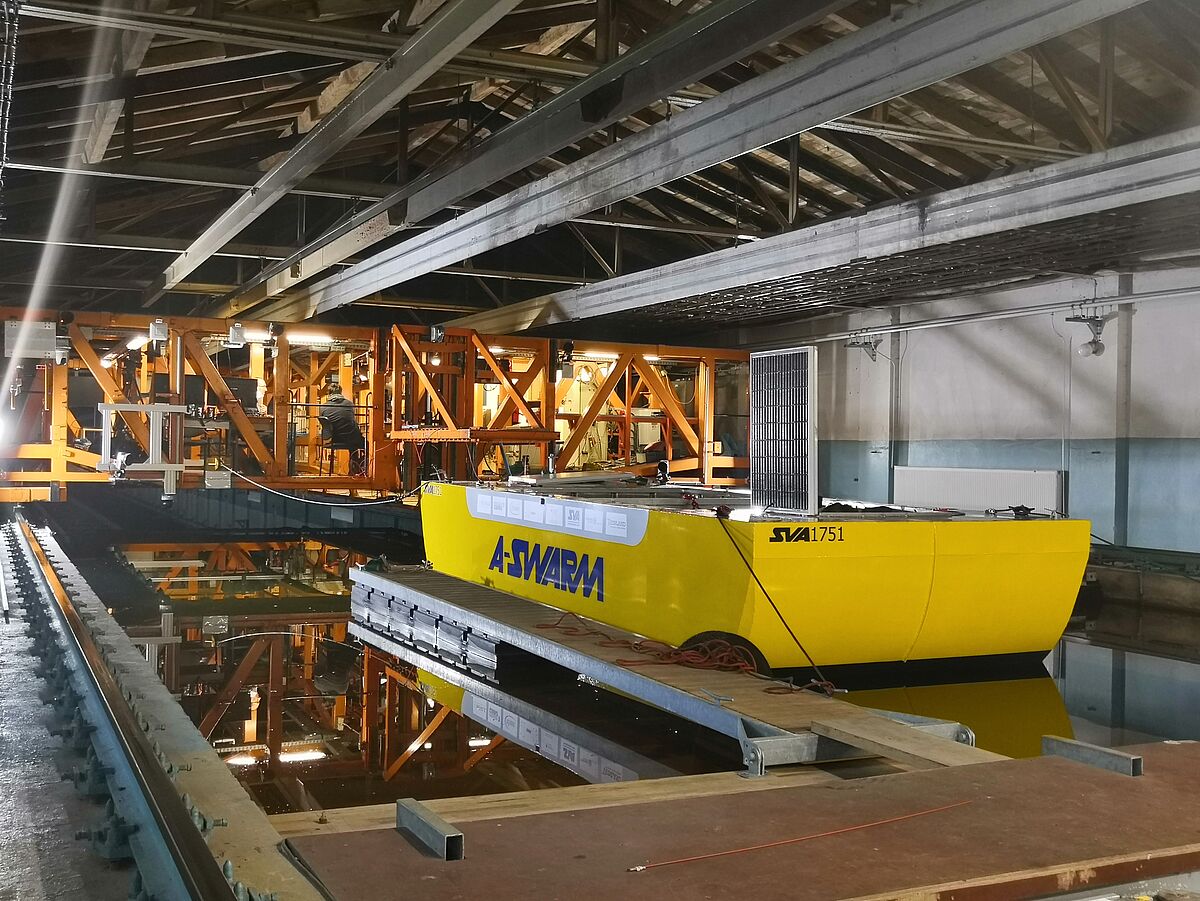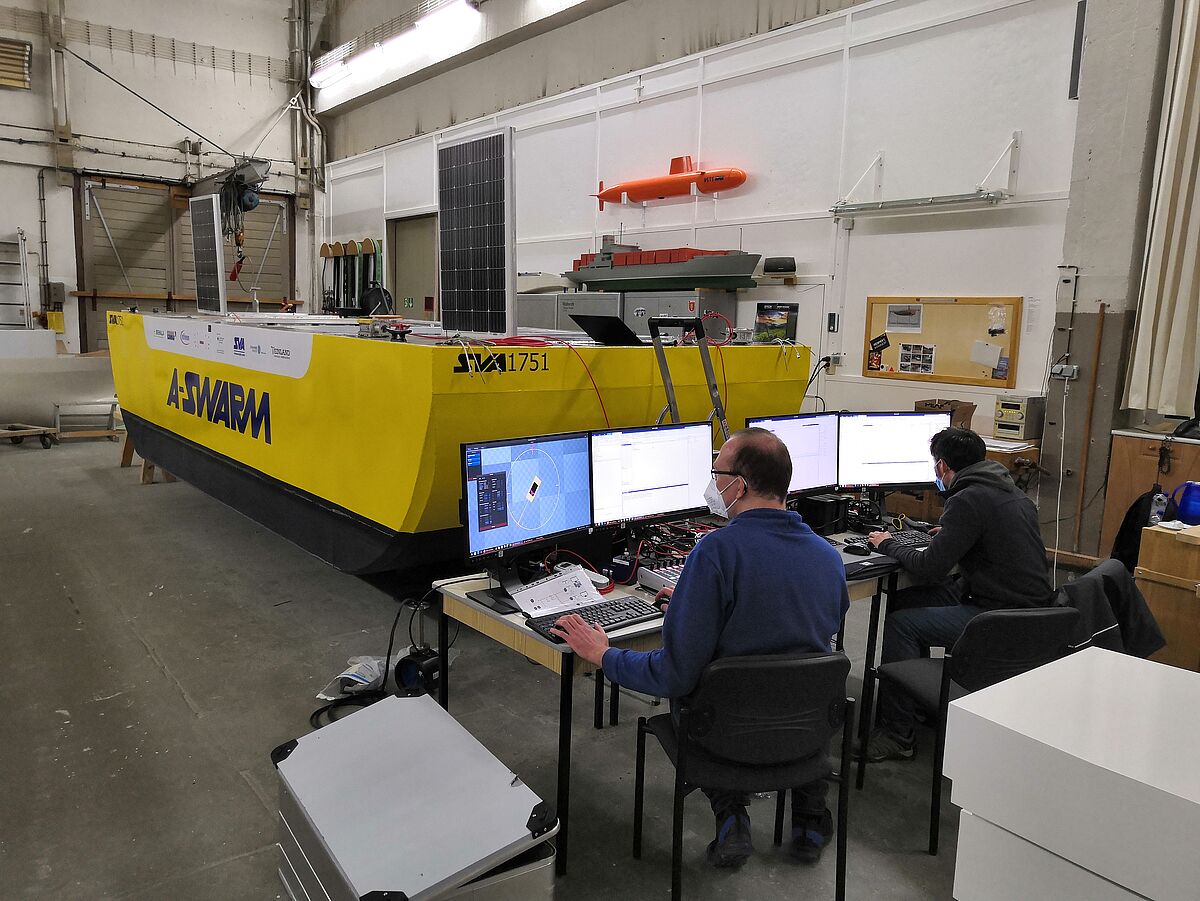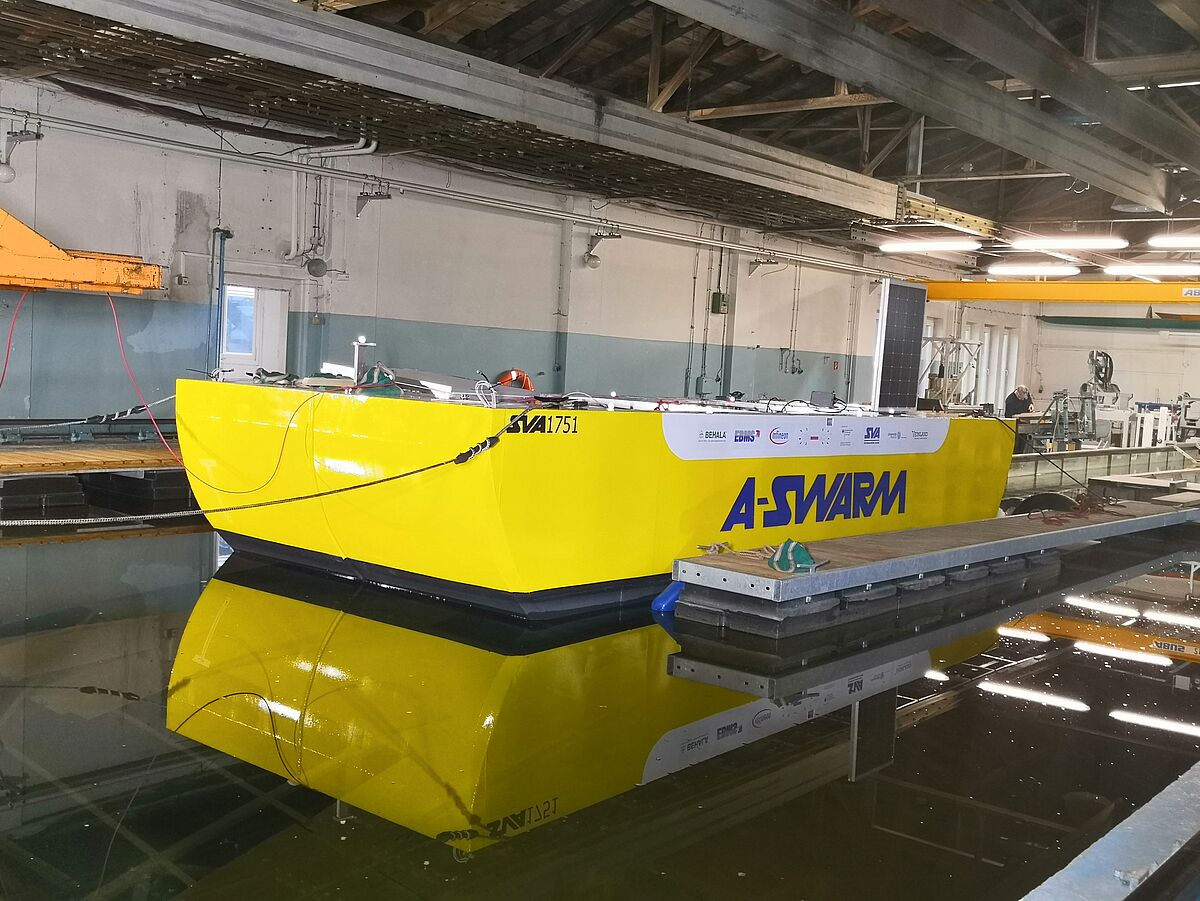A-SWARM
Autonomous electric navigation on waterways in metropolitan regions



With the steady growth of online trade and the associated negative consequences of increasing traffic congestion, noise pollution and environmental pollution, solutions are needed for an ecological alternative for the transport of goods, especially in metropolitan regions such as Berlin. With the existing water infrastructure there, an alternative shift of the flow of goods from the roads to inland waterways is possible. In particular, the transport of goods into the metropolitan region up to distribution to decentralized hubs for land-based delivery of the last mile can thus be carried out with low environmental and traffic pollution.
The aim of the A-SWARM project is to develop a transport system consisting of small floating units that can be operated independently or coupled together and are powered by electric propulsion with zero local emissions. The focus is on the development and testing of such an autonomously operating water vehicle. In particular, the feasibility of such a system is to be proven by a demonstrator operation in a real laboratory in the area of Berlin's Westhafen.
The Institute for Automation Technology at the University of Rostock is responsible for the development of the control system in the SWARM-control subproject. The objectives of the subproject focus on the systematic design of a control system for track following for inland vessels on narrow and heavily trafficked waters as well as real-time trajectory optimization based on nautical charts and taking into account locally detected moving and stationary obstacles as well as other watercraft.
Trajectory tracking control system
The path control of ships on inland waters is characterized by various special requirements. In addition to limited space for maneuvering, inland waters are often characterized by localized flow conditions, and in urban regions gusty winds, jet effects, and wind shadowing are added. These have a significant influence on the motion behavior of the ship and place high demands on the control system. Furthermore, hydrodynamic effects caused by shallow water depths influence the ship, which may have to be considered in the control algorithms.
The focus of this objective is the research of generic methods for filtering and feedforward control of wind- and current-induced disturbances acting on the ship as well as their early compensation. This significantly reduces their influence on the ship's misalignment and enables safe maneuvering at narrow passages, lock entrances and in heavy traffic.
Real-time trajectory optimization
The routes of inland vessels are usually determined by local conditions, the buoyed fairway and other navigation marks, or are firmly planned. In real ship operation, however, deviations from this route are necessary for various reasons. Typical scenarios include evasive action in the event of ship encounters or fixed or mobile obstacles in the shipping lane, weather-related deviations due to wind and current, or emergency stopping maneuvers in hazardous situations.
If deviations from the planned route are necessary or have already occurred, a new route must be created that should meet certain requirements. These would be:
The new route must be safe and navigable without further obstacles. In addition to the nautical chart data, the routes of other watercraft and mobile obstacles should also be taken into account in accordance with the time horizon of the planning.
The new route should be as energy-efficient as possible, i.e. the energy requirement for the planned route should be included in the trajectory planning as an optimization criterion.
The newly planned route should be able to be traversed in as short a time as possible.
The mentioned criteria influence each other. The task of trajectory planning is therefore also to find a suitable weighting of the criteria. Whether this weighting is fixed or can be calculated on the basis of the current data situation is to be the subject of the research work in this subproject.
After the conception and realization of the control algorithms and trajectory optimization, the focus is on the simulative and experimental validation of the implementation as the final project goal, especially the testing with the demonstrators developed in the project in the real laboratory "Berlin Westhafen".
This project with a duration until 31.08.2022 is funded by the German Federal Ministry for Economic Affairs and Energy in the framework program Maritime Research Strategy 2025 and supervised by the Project Management Jülich (PTJ). Project partners in this joint project are SVA Schiffbau-Versuchsanstalt Potsdam GmbH (joint coordinator), the Department of Design and Operation of Maritime Systems at the Technical University of Berlin, Infineon Technologies AG Munich, Veinland GmbH Neuseddin and BEHALA - Berliner Hafen- und Lagerhausgesellschaft mbH.
Contact: Dr.-Ing. Björn Kolewe
